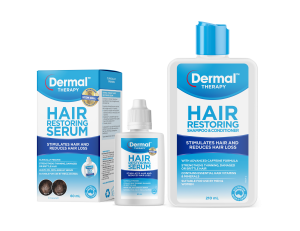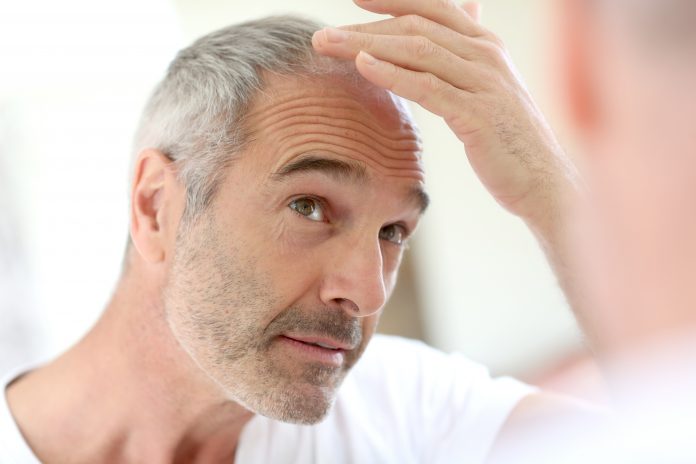This month we spoke with Pharmacist and Head of Technical & Innovation at Dermal Therapy Amit Saha about the brand’s product offering within the hair loss category.

Tell us about the Hair Restoring Serum.
Dermal Therapy Hair Restoring Serum is a leave-on serum that’s intended to be applied directly on the scalp and is formulated with two clinically tested active complexes to stop hair loss and stimulate hair.
Forty per cent of 35-year-old men and 65 per cent of 60-year-olds suffer noticeable hair loss. Women too, with up to 75 per cent of 65-year-olds noticing hair loss in women. The Dermal Therapy Hair Restoring range is suitable for both men and women and safe to use post-partum.
How does it differ from similar products on the market?
It’s a complete restoring system using two active complexes used for two different purposes. The vitamin complex nourishes the hair root and scalp to stop hair loss and further thinning, while an innovative stem cell-based technology helps restore hair by reducing the telogen phase and extending the anagen phase.
How did the Hair Restoring Serum come about? What was involved in the R&D process?
After our huge success in treating scalp pruritis with scalp relief serum, the natural extension for our brand is to play in the hair loss and hair regrowth space. The biggest challenge during the R&D process was to research ingredients that provide clear scientific benefits to this issue while bringing something very unique to the existing marketplace. Also, incorporating the mix of ingredients while maintaining compatibility to deliver results in a timely manner. We believe that we’ve truly ticked all the boxes with this R&D project.
What are the indications for use?
Apply a few drops of the leave-on serum daily onto the scalp and massage gently, ensuring optimum coverage. The hair can be wet or dry when applying the serum to the scalp. Don’t rinse out. Allow the serum to travel around the scalp before brushing. Don’t apply heat to the hair once the serum has been applied. For best results, use in conjunction with Dermal Therapy Hair Restoring Shampoo & Conditioner.
What are the contraindications for use?
No known contraindications.
Are there any precautions that need to be taken when using this product?
The full ingredient list is disclosed on the pack. If you have any known allergy to any of the listed ingredients, you should avoid it.
What is the best way to use this product for optimum results?
Use the range as per direction for 12 weeks to see the visible results, though individual results may vary.
The Dermal Therapy website recommends that the serum should be used together with the Hair Restoring Shampoo & Conditioner. What makes these two products complementary?
Dermal Therapy Hair Restoring Shampoo & Conditioner is specially designed to complement the action of the serum. It’s an advanced caffeine-based shampoo that is known to stimulate hair growth, but also fortified with all essential vitamins and minerals required for stopping hair loss. The Hair Restoring Shampoo & Conditioner is also soap and sulphate-free – not to irritate the scalp any further.
Where is this product available?
The products are available from most pharmacies. The range is available from all pharmacy whole sellers to order.
How can pharmacists promote this product in their pharmacies?
The best way to promote this product is as a “go-to solution” for hair loss and thinning and before starting medical treatment such as minoxidil.
What advice should pharmacists be providing to customers who are considering using this product?
Three simple advice points: ensure compliance as per direction, use both serum and shampoo, and lastly, use for at least 12 weeks.
This interview was originally published in the June issue of Retail Pharmacy magazine.








